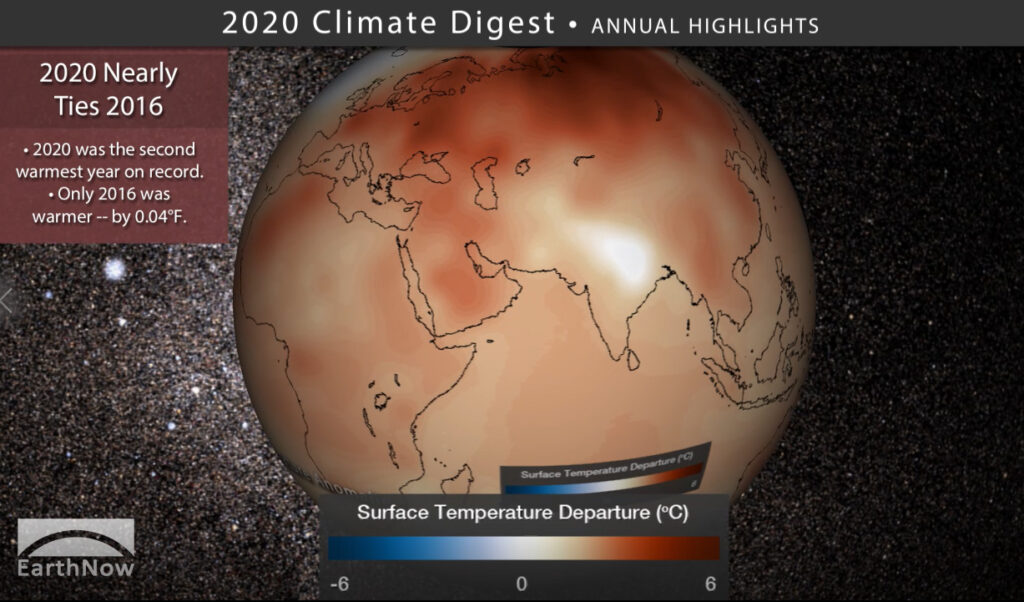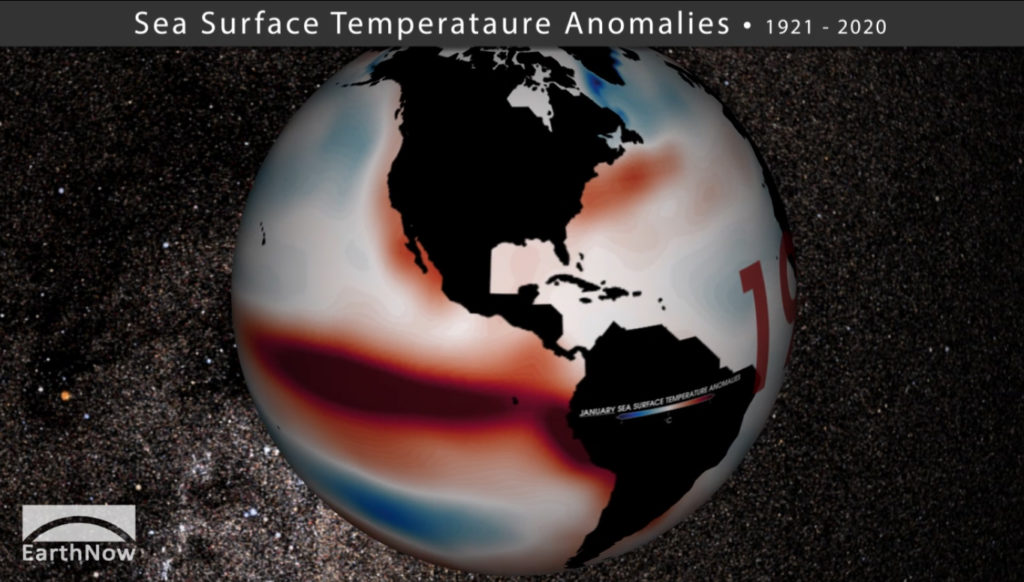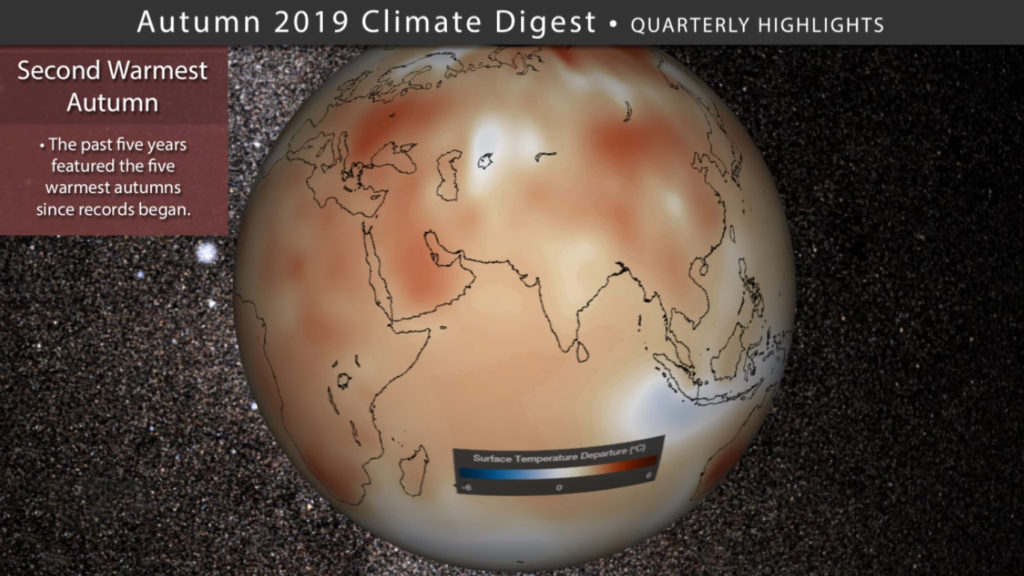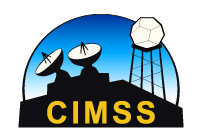Three phenomena dominated the Climate of 2020: wildfires, hurricanes, and the COVID-19 pandemic.
When Earth rotated into 2020, bush fires were raging in Australia. Smoke rose into the stratosphere and circled the globe for months. Later in the year, the western U.S. also experienced a devastating wildfire season, spewing even more smoke into Earth’s atmosphere.
Meanwhile travel restrictions due to the COVID-19 pandemic resulted in global reductions in air pollutants, especially atmospheric nitrogen. Lower fossil fuel use also resulted in a 7% reduction in atmospheric carbon dioxide.
Less air pollution allowed a little more shortwave solar energy to reach Earth’s surface. But wildfire smoke meant solar energy was reflected back to space. And lower levels of carbon dioxide allowed more longwave infrared energy, or heat, to escape out into space. All of these affected global temperatures.
The global average land and ocean surface temperature in 2020 was 1.76 degrees Fahrenheit above average — only 4 tenths of 1 degree cooler than 2016. If not for extensive sunlight-reflecting wildfire smoke and lower levels of heat-trapping CO2 emissions due to the pandemic, 2020 may have surpassed 2016. As it was, Earth’s Northern Hemisphere saw its hottest year on record in 2020.
2020 also saw a record setting Atlantic hurricane season with 30 named storms, requiring the additional use of Greek letters to name them all. Seven systems caused over a billion dollars in damage! These were Hanna, Laura, Isaias, Sally, Delta, Eta and Zeta.
Research shows that the hurricane season is growing longer due to warmer ocean waters and warmer air temperatures. The ten hottest years have all occurred in the 21st century; the top two were 2016 and 2020.
The 2020 Climate Digest consists of a short movie (3:51 minutes) made for Science On a Sphere® (SOS) and an MP4 video accessible through YouTube.
Content includes:
– Smoke and aerosol patterns from the beginning of 2020
– Examples of decreases in NO2 for India and China
– NOAA-20 imagery of western U.S. wildfire smoke in September 2020
– Seven different 2020 hurricanes that caused over a billion dollars damage
– 2020 Blended Land and Sea Surface Temperature Anomalies
– 100 years of Global Temperature Anomalies
You can download the SOS content from this FTP Site.
Credits: EarthNow Team
Music: Arctic Sea Ice by Judy Twedt
References:
2020 Global Climate Report https://www.ncdc.noaa.gov/sotc/global/202013
2020 Billion Dollar Disasters https://www.ncdc.noaa.gov/billions
2020 Carbon Budget https://globalocean.noaa.gov/News/2020-global-carbon-budget-released-1
NO2 Declines https://svs.gsfc.nasa.gov/4835
Australia Wildfire smoke and color bar https://gmao.gsfc.nasa.gov/research/science_snapshots/2020/Australia_fires_smoke.php










